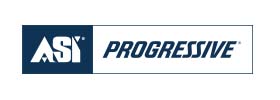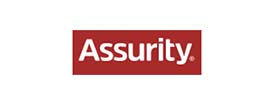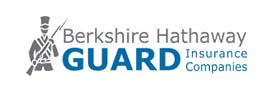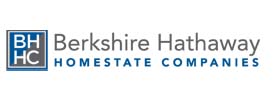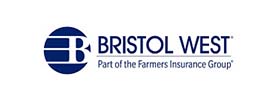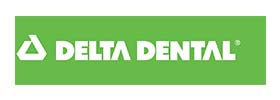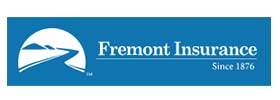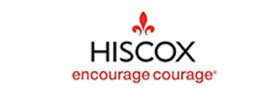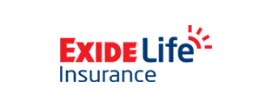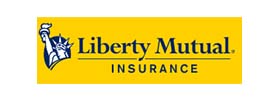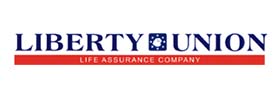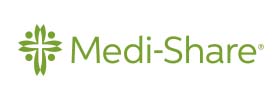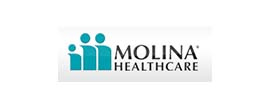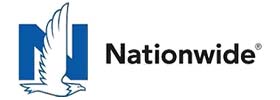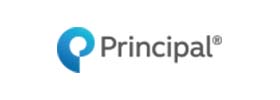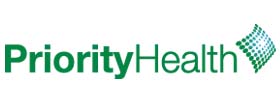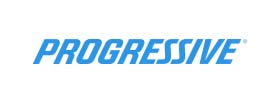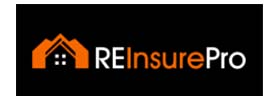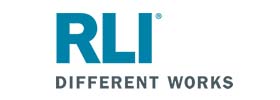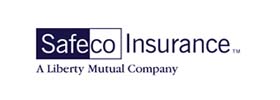Shield Insurance Agency Blog
Welcome to the Shield Insurance Agency Blog.
Here you will find a ton of articles on each of these topics: Auto Insurance, Boat/Watercraft Insurance, Business Insurance, Flood Insurance, Health Insurance, Home Insurance, Insurance, Life Insurance, Michigan Auto Insurance Reform, Recreational Insurance, Renters Insurance, RV Insurance, Things To Do At Home, Umbrella Insurance, and even a list of the Shield Agency Weekly Gift Card Winners,
If you have any suggestions for content, please drop us an email.

3 Ways to Winterize Your Business
3 ways to winterize your business
For business owners, Jack Frost can nip at more than your nose. If you don’t winterize, bitter winter temperatures can cause damages that will take a chunk out of your bottom line.
But a few preventative steps can keep your business winterized and safe from the dangers posed by the cold, ice, and snow.
1. Keep the water flowing during winter.
Frozen pipes can burst, causing major damage to any business location. Prevent this from happening by winterizing:
- Keeping your thermostats set at a minimum of 55°F when the building is empty.
- During especially cold winter situations, running a small trickle of water through your faucets to help keep pipes from freezing.
- Exposing pipes to warmer temperatures by keeping cabinet and utility room doors open.
- Making sure all pipes in difficult-to-access areas—such as crawlspaces, exterior walls, or attics—are insulated. Hardware or big box stores have foam and fiberglass insulation. The more insulated, the better!
- For unheated sprinkler control valve/fire pump rooms, using UL-approved gas or electric unit heaters to help keep temperatures warm.
- Installing a monitored electric leak detection system for the main domestic water line along with monitored electronic sensors near water sources to help you discover leaks before they cause significant damage.
2. Keep your heating bills in check.
Maintain an efficient furnace and keep energy costs under control with a few simple steps to winterize:
- Use a programmable thermostat to reduce heating costs by as much as 30%. During low-occupancy hours, set the thermostat several degrees lower for significant savings.
- Check your heating ducts to see if the insulation should be replaced. Inadequate insulation could lead to higher energy bills.
- Install energy-efficient glaze on windows and doors. Save money on your energy bills by replacing the existing glass with low-emissivity glass designed to prevent heat from escaping. As much as 20% of a facility’s heat is lost through windows and doors.
- Clogged, dirty air filters can restrict airflow and increase your energy demands. Replace or clean your furnace filters regularly to keep your heating system efficient.
- Alter your ceiling fans so they rotate in a clockwise direction, which can actually reduce heating costs by forcing warm air near the ceiling lower and warming the room.
3. Keep a roof over your head.
Your roof can take the brunt of winter’s force, whether it’s bitter cold, snow, or ice. Keep it in tip-top shape by keeping it winterized:
- Clearing your roof of all debris, dirt, and leaves, which can block gutters and downspouts, preventing snowmelt from properly draining away from the building. It can also cause ice dams and heavy snow buildup on your roof, which can cause additional damage.
- Inspect gutters and downspouts to see how securely they’re fastened to the building. Snow and ice can cause gutters to weaken and break away from the building, allowing water to seep into the wrong areas.
- If a winter storm occurs, plan to have a professional snow removal service clear the roof of excess-accumulation. This will prevent excessive loads on the roof and eliminate the possibility of structural failure.
Talk to your local independent Shield agent for complete details on our business coverage. This article is for information purposes only. For specific coverage details, always refer to your policy. If the policy coverage descriptions in this article conflict with the language in the policy, the language in the policy apply.
References:
– Insurance Institute for Business & Home Safety (IBHS)
– Smallbiztrends.com

Are Electric Space Heaters Safe?
Are electric space heaters safe?
Electric space heaters can be used safely, but they are not the safest option for staying warm when the temperature drops.
According to the National Fire Protection Association (NFPA), space heaters account for 43% of home heating fires and 85% of home heating deaths.
They can also be a hazard in the workplace. While there are no federal safety rules prohibiting space heaters at a worksite, you should follow local rules and regulations. OSHA also requires businesses to follow all manufacturer specifications on the unit’s label and in the user manual when using electrical equipment.
So, if you’ve tried other ways to warm the area, like adjusting your HVAC system or adding weather stripping, and it’s just not working, an electric space heater might be the next best option. And it can be used safely at home or in the workplace when you take the right precautions.
Here are steps you can take to increase space heater safety for your home or business.
Use your indoor electric space heater safely
Here’s how to increase safety while enjoying the warm comfort of your electric space heater indoors:
- Follow all manufacturer’s instructions and guidelines.
- Before you use it, do an inspection of the space heater to check for damage on its parts, knobs, coils, and legs. If any damage is detected, take the space heater out of service immediately and have it repaired by a professional.
- Place the space heater at least six feet away from combustible materials and never place anything on top of or touching it.
- Keep a fire extinguisher near each space heater.
- Put your space heater on a level, hard and nonflammable surface. Avoid furniture, countertops, rugs, or carpets. Keep it out of high-traffic areas, such as doorways.
- Make sure your space heater is plugged into properly grounded outlets. Do not use extension cords or power strips.
- Turn off the space heater when no one is occupying that area or when it is out of sight.
- Do not use space heaters if small children are in the area.
- Unplug space heaters at the end of each day and make sure the unit has cooled before exiting the room or job site.
- Only use a space heater as a temporary (not permanent) heat source.
- Make sure your smoke and carbon monoxide detectors are in good working condition.
- For business use, require employees to request permission from a supervisor or facility manager.
When you use your electric space heater the right way, you are reducing the likelihood of property damage and injuries — keeping you and the important things around you safe and sound.
Safely use electric space heaters outdoors
Many restaurants, schools, offices, and other businesses use outdoor spaces during the cooler months of the year and rely on outdoor heaters to keep businesses running and people warm. Check out these safety tips for heating and storing propane cylinders and other outdoor space heaters
- Use propane heaters in accordance with the manufacturer’s instructions.
- Set up heaters in open, ventilated areas. Propane cylinders cannot be used in enclosed spaces.
- Use the shortest possible hose to operate the propane cylinder.
- Follow restrictions based on occupancy. For example, restaurants with 50 or more occupants cannot have propane cylinders within five feet of exits.
- Store propane cylinders inside and in an area with minimal potential exposure to temperature increases, physical damage, etc.
There are also electric patio heater options for heating the outdoors.
NFPA recommends following these safety guidelines for electric patio heaters:
- Follow the manufacturer’s guidelines for safe use and storage.
- Complete proper inspection, cleaning, and maintenance procedures for each use.
- Be mindful of necessary clearances from the heating element as well as installation and wiring requirements.
- Pay attention to the power requirements and whether an electric patio heater can be plugged into an outdoor extension cord and receptacle, power tap, or multiplug adapter safely.
- Ensure any extension cords used are in good condition and free from splices or deterioration.
It’s possible to accomplish the safe use of space heaters by following the right precautions during setup, use, and storage.
Keep this article handy as a quick reference for basic space heater safety indoors and outdoors.
Things to consider before you buy or replace an electric space heater
In addition to using your space heater safely, here are other safety tips to consider for buying, maintaining, or replacing an electric space heater
- Understand which type of space heater you have. There are convection and radiant heaters. Convection space heaters circulate air in the room. Radiant space heaters emit infrared radiation that directly heats the objects and people in line with the space heater.
- Invest in an electric space heater with added safety features. An automatic shut-off feature if the heater falls over or heating element guards are good features to look for.
- Consider the hours you have used your space heater as an indication for when it is time to replace it. For example, a space heater you have used daily for two years might need to be replaced due to the long hours of use. Replace your heater with a newer, safer model when possible.
Electric space heater safety is essential for you and the people around you. Practice safe use of space heaters on a regular basis to reduce the risk of fire in your home or business.
This article is for informational and suggestion purposes only. Talk to your Shield Insurance Agent to learn more about Homeowners and Business insurance coverage options

BOP Can Protect Your Company Assets and Save You Money
BOP: Business Owners Policy
By buying business insurance, you take a big step to secure your finances and create a strong risk management strategy. After all, you never know when a single incident like a fire or break-in could devastate your business and cost you a fortune.
One of the simplest ways to put together a strong business insurance portfolio is to start your coverage with a business owner’s policy, better known as a BOP. It’s a great way to not only get strong coverage but also to save money on your benefits. Consider just a few of the extensive property benefits that a BOP can provide with just a few simple steps.
Why BOPs are Customizable
BOPs generally offer several standard types of commercial insurance in one place. These are:
- Property insurance to cover your company’s owned assets, including equipment and inventory.
- Liability coverage that pays for third-party injuries or property damage that are your fault.
- Business interruption insurance will offer you coverage for lost income or overhead costs that continue to burden you even if you have to temporarily halt your work.
However, just because BOPs will offer you standardized coverage, that doesn’t mean they are not customizable. This is particularly beneficial when it comes to your company property. After all, no two businesses are alike. That’s why the belongings you seek to insure are going to vary considerably, and you’ll want your BOP to be able to address them.
Within your BOP’s property insurance, you might be able to insure:
- Your inventory and the materials used to make products if you manufacture them on-site.
- Marketing materials.
- Company equipment. These items might be anything that you use to manufacture products.
- Furnishings such as shelving or storage cabinets, break-room appliances, chairs, desks, or decorative items.
- Electronic items such as computers, printers, company mobile devices, or tablets.
- Signage (both indoors and outdoors)
Of course, if you own the buildings that house your business, then your BOP can also insure the structure of the property itself. However, if you rent the property, then you usually don’t have any obligation to buy coverage.
However, it is important to remember that all BOPs will include exclusions and limits to what they will pay for certain losses. For example, your policy won’t pay for normal wear & tear, nor will it cover any damage that costs less than the deductible on your coverage. Another common exclusion is a limitation on what your policy will pay for outdoor signage.
Still, you can work with your independent insurance agent to determine exactly how to tailor your BOP’s property coverage to your benefit. There are various coverage endorsements available which might be precisely the benefits you need for your company assets.

How to build a fleet safety program
How many vehicles in your fleet?
When you have employees driving on behalf of your business — whether or not they use a company vehicle — it’s time to take a closer look at your risk exposure and establish a fleet safety program to help protect the wellbeing of your company and your employees.
Here are five best practices for creating a risk management program for fleet vehicles:
1. Start at the top and write it down.
The best way to ensure your fleet safety program is successful is by having leadership commit to supporting it as a critical part of your company’s risk management and fleet management programs. Then, after setting expectations among your leadership, write down a formal plan with clear policies and procedures for fleet safety.
2. Identify and screen your drivers.
Safe drivers are an essential part of a fleet safety program — and you may have more drivers than you realize. Your fleet program can include company-owned, private, or rented vehicles. While businesses are generally aware of their risk exposure with company-owned vehicles, many don’t know the full extent of their risk exposure from non-owned vehicles. Keep a record of everyone who currently is or will be driving on behalf of your business, whether they use a company-owned, personal, or rented vehicle.
For those employees using their own personal vehicles for business purposes, it’s important to hold them to the same fleet screening standards as those employees operating company-owned vehicles. You also may need to add coverage to your commercial auto insurance, which could help your business recover in case an accident results in a business liability event for your company, which could impact both your finances and your reputation.
When hiring, carefully screen your drivers. Check the job applicant’s Motor Vehicle Record (MVR) to view past driving trends, which can help provide insight into future driving behaviors. An MVR typically shows a person’s driving history from the past three years, including driver’s license information, point history, violations, convictions, and license status.
For many companies, a driver is considered unacceptable when the MVR shows:
- More than three moving violations, accidents or both
- Driving while intoxicated or under the influence of narcotics
- License suspension and any serious violation such as reckless driving, endangering the lives of others, and racing
By pre-screening drivers as part of your standard hiring practices, you’ll empower your fleet safety program, making it more reliable, effective, and safer.
3. Train and manage your drivers.
Require all of your fleet drivers to learn and commit to the company’s fleet safety policies and procedures. Additionally, provide training and resources on defensive driving and other safe driving techniques. For example, there are many forms of distracted driving including talking on the phone, texting, eating, daydreaming, and other things that take the driver’s attention away from driving.
It is also essential to continue to manage your drivers to help ensure they are following your fleet safety rules and driving safely. Schedule time to check the MVR of your drivers and have a plan in place for handling drivers with marginal or poor driving records.
You may also want to consider using fleet telematics to further strengthen your overall fleet safety program. Telematics is a technology that can track and monitor a variety of driver and vehicle parameters. Some examples include a vehicle’s speed, fuel consumption, harsh braking, and other driving behaviors.
4. Have a formal preventive maintenance program and secure your vehicles.
Make sure all vehicles are safe to drive by having each of them on a formal preventive maintenance program. This includes routine oil changes, vehicle inspections, making repairs, and keeping vehicle records. It’s also important to ensure that all vehicles are being secured to minimize any losses related to theft or vandalism while the vehicle isn’t being used.
5. Review accidents and consult your Risk Control specialist.
Take time to review accidents involving your company’s fleet vehicles to help you pinpoint your risk exposures, identify trends, manage accident costs, and take action to avoid future accidents.
Additionally, ask your independent insurance agent about loss and risk control services that may be available to you through your commercial insurance provider. Some insurance companies, including Grange Insurance, offer Risk Control Services to their commercial insurance customers, providing expert risk management services including formalized safety programs, training and help identifying, analyzing and addressing business’s unique risks.
This article is for informational and suggestion purposes only. If the policy coverage descriptions in this article conflict with the language in the policy, the language in the policy applies.

Millennial Health Consumer Attitudes
Shield Blog | Millennial Health | Health Insurance |
Consumer attitudes about health. Four surprising ways millennials approach and engage with health care
Novant Health today released findings of its first Consumer Attitudes About Health Study noting the latest trends in millennial health attitudes and behavior. The nationwide online survey of 2,104 U.S. adults aged 18 and older, including 419 millennials aged 18-35, was recently conducted by Harris Poll on behalf of Novant Health.
Millennial Health
Key takeaways and findings from the study suggest millennials approach and engage with health care in four surprising ways:
Millennials indicate they would take better care of themselves if they had more time to do so (66 percent); however, they also report spending large amounts of time watching television and engaging on social media.
The Consumer Attitudes About Health Study indicates millennials spend significantly more time on sedentary activities than they do exercising— on average, they spend almost three hours sitting at a work desk, nearly three hours watching TV, and more than two hours on social media, while exercising makes up only about one hour of a millennial’s day.
Millennials are going “old school” when it comes to health information—four times as many millennials report relying on a health care professional for health information (63 percent) vs. using social media (15 percent) as a health resource.
While millennials spend more than two hours per day on social media on average, only about 21 percent use social media to diagnose themselves or their loved ones. Three in five millennials (61 percent) reported that social media is harmful (vs. helpful) to their health.
Millennials understand the importance of making end-of-life plans but do not feel equipped to do so. While 88 percent feel that planning for end-of-life care is important, millennials don’t feel they have the tools they need to do so.
More than 60 percent of millennials (62 percent) report not knowing where to start when thinking about end-of-life care, suggesting that they may not feel equipped to start planning for end-of-life care regardless of when they plan to start thinking about it.
The importance of being treated with respect by healthcare providers cuts across all demographics, with seven in 10 millennials indicating that being treated well/with respect is how they would define “quality healthcare”.
According to the Consumer Attitudes About Health Study’s findings, similar proportions of millennials say that being treated well/with respect (69 percent) and effective treatments (73 percent) are how they would define quality health care. Quality in health care is defined multi-dimensionally, starting with effective treatment, but respect, disclosure, meeting expectations for care, and being treated as a person, not a patient, are also commonly mentioned. Around seven in 10 millennials agree with this holistic view of quality, defining health care as an effective treatment, being treated with respect, and being kept fully informed
Millennial Health
“The closer we look, the more we see how unique the millennial population is,” said Jesse Cureton, Novant Health’s Chief Consumer Officer. “This study provides new insights into how millennials think and behave when it comes to their health, and the more we understand about them, the easier it will be to maintain our commitment as a consumer-centric organization that directly meets the needs of our specific patient population.”
The nationwide survey was conducted online among 2,104 U.S. adults aged 18 and older (including 419 millennials aged 18-35) by Harris Poll on behalf of Novant Health from March 1-9, 2016. For the complete research method, including weighting variables and additional subgroup sample sizes, visit NovantHealth.org/ConsumerAttitudes .
More blogs by Shield Insurance Agency

Millennials’ health is declining
Shield Insurnce Blog | Millennials’ health |
Millennials: Anyone born between 1981 and 1996
Millennials’ health is declining. Can employers and health plans help?
Millennials’ health concerns have seen double-digit increases in major depression and significant increases in substance use disorders over the past year. The prevalence of other chronic diseases is climbing, too. This data comes from the Blue Cross, Blue Shield, The Health of America Report® on millennial health. And it’s what prompted experts and advocates to come together recently for a Blue Cross Blue Shield Association (BCBSA) virtual forum about millennials’ health.
Health trends worsened by multiple crises
These worsening health trends were already in place when the COVID-19 pandemic hit. Then came a financial crisis, which has disproportionately impacted millennials, whose unemployment numbers are higher than other groups, according to Mark Zandi with Moody’s Analytics and a speaker at the BCBSA forum. The resulting stress may be exacerbating health conditions, in particular behavioral health.
Experts in healthcare, employee wellness, demographics, and economics gathered to share ideas for supporting this generation in ways that acknowledge their needs and preferences at this critical moment.
Employers focus on wellness and engagement for Millennials’ health
Krista Larson from the law firm Morgan Lewis and Aurora Davis with Comcast shared their strategies for building a healthier workplace for millennials. Larson said Morgan Lewis has invested in fostering open dialogue among employees about mental health to reduce stigma. The firm also features a senior leader who shares personal experiences with substance use disorder. The firm has also made the most of a difficult work-from-home situation, creating virtual communities for employees to boost mental and physical wellbeing. Comcast’s Aurora Davis said the company has focused on creating a healthier environment for employees. The new campus in Philadelphia, when re-opened after the pandemic, includes an onsite healthcare clinic, wellness center, physical therapist, and dietician. The company has also focused on virtual stress relief tools for employees.
One rationale behind those strategies, said Larson and Davis, is that they acknowledge millennial values, a key consideration given a large percentage of their workforces are millennials.
What millennials value in an employer
Kim Lear, a generational researcher with InLay Insights, sketched a portrait of those values and why Morgan Lewis and Comcast’s investments may be on track for attracting and keeping millennial talent, as well as helping them get and stay healthy. Millennials are more committed, she said, to companies that promote self-care, show leadership in social justice, and work to keep them engaged in wellbeing.
They also, said Lear, want healthcare that’s accessible and health plans that are easy to understand. That could mean expanding access to digital options, including telehealth, which has taken off during the COVID-19 pandemic. It could also mean re-thinking the design of health plans or how employers educate employees about their choices.
Health plans are making it easier for millennials to tackle chronic disease
Health plans are helping employers shape those offerings. Blue Shield of California’s David Bond said the company’s new wellness and chronic disease management and prevention platform, Wellvolution, was designed with millennials in mind. It asks users to identify their health goals and matches them to personalized, evidence-based digital health programs.
Wellmark Blue Cross and Blue Shield’s (Wellmark BCBS) Julie Enga agreed that millennials need a path toward health beyond the primary care physician (PCP). The speakers agreed that millennials are interested in wellness but not necessarily relying as much on, or waiting for appointments with, PCPs as previous generations. Rather, they’re seeking information online or going to urgent care centers. That makes it difficult to address chronic issues like diabetes or depression, which require ongoing care. Digital wellness platforms can help, engaging millennials online and on-demand.
Enga also said millennials in Wellmark BCBS’ market have indicated an interest in a health plan that’s simpler to use and understand, so the company rolled out a product called BlueSimplicity℠ that simplifies choices and makes costs clearer upfront.
The biggest opportunity: engage millennials in behavioral health treatment
While chronic physical diseases remain a top concern about millennials, experts returned to the theme of behavioral health throughout the October 28, 2020, virtual forum. A significant percentage of people with a behavioral health diagnosis also have one or more chronic diseases. Treating both is difficult, and expensive. But engaging millennials with behavioral health conditions in treatment options that appeal to them will make managing chronic diseases easier. Employers, insurers, and community leaders emphasized the urgency to address millennial mental health, especially in the face of what some are calling the triple pandemic of COVID-19, a financial crisis, and systemic racism.

Rising prescription costs
Rising Prescription Costs
As healthcare premiums are increasing you may have noticed rising prescription costs. In a study done by Consumer Reports in 2019, 12% of individuals said their prescriptions costs increased by more than $100 over the past year. One contributing factor is that there are no federal regulations that keep drug prices in check.
How are consumers able to offset rising prescription costs?
Ask your doctor for generic:
Most brand-name drugs have generics that can be up to 90 percent cheaper. They aren’t available for all prescription drugs, but it doesn’t hurt to ask your doctor or pharmacist.
Ask about over-the-counter options:
Some medications can be a combination of two inexpensive drugs that you can purchase without a prescription.
Use manufacturer discounts:
Many drugmakers offer some type of discount. For example, Janssen, which makes Xarelto, offers a discount that can drop the price down to $10.
These are not all the ways you can help reduce your prescription costs but are some of the most effective ways. As always if you have any questions regarding your healthcare costs please talk to one of our insurance agents.

What is a Qualifying Event and Why Does It Matter?
Shield Insurance Blog | Qualifying Event | Health Insurance | Contact Bri Today!
The terms Qualifying Event, Special Enrollment Period, and Open Enrollment Period get tossed around in conversation when discussing both employer-sponsored benefits and individual health insurance plans.
The timeframes in which you can alter your benefits through a company or for your own individual policy are limited to certain times or events of the year. For employer-provided benefits, the time of year to make changes, add, or remove coverage for yourself and family members is called open enrollment and is managed by Human Resources. It’s “open” because these adjustments are made at the employee’s discretion. If you purchase your own health insurance through a private insurance company or the Health Insurance Marketplace (Obamacare), open enrollment takes place each year starting November 1st and ending December 15th. Any changes from this timeframe go into effect as of January 1st of the following year. Outside of these timeframes, your benefits are locked in until the next enrollment period. But what happens if you need to make changes at another time due to a qualifying event?
What is a Qualifying Event?
A Qualifying Event is a life circumstance that allows someone to make changes to their insurance coverage outside of open enrollment for both employers and individuals. A Qualifying Event is a reason to have a Special Enrollment Period or midyear change. The allowed timeframe for reporting these changes or updating coverage is between 30-60 days from the date of the event. If you have missed this timeframe, you may not be allowed to make changes. Some examples of qualifying events are birth, marriage, divorce, or loss of other coverage. If you have questions about your own coverage or coverage through an employer, we are here to help!
If you have any questions or would like to explore your options for health insurance, it is always a good idea to contact your insurance carrier or speak with an insurance agent. Shield Insurance Agency represents over 40 insurance companies and can provide you with a free quote and personalized advice. Contact Shield Insurance Agency at (616) 896-4600 for a free quote today or start the quoting process by visiting this LINK and an agent will be in touch soon.















